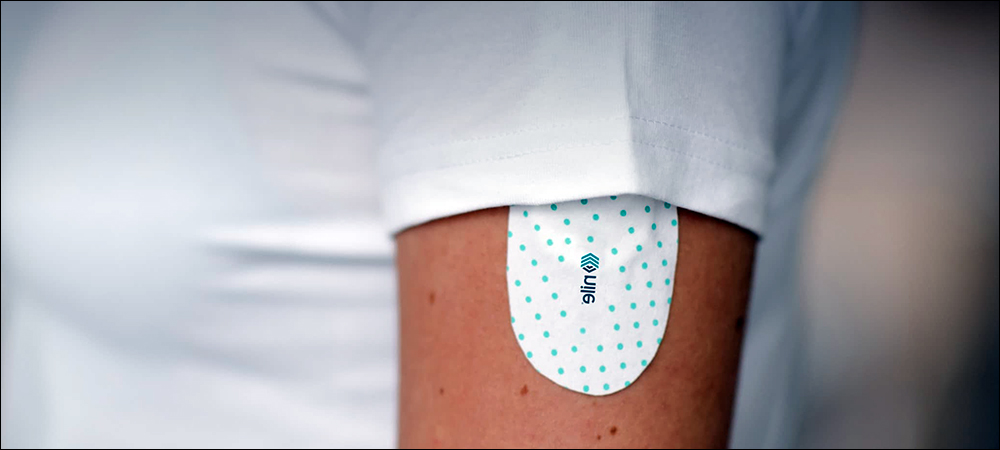- Healthcare Poised to Be New Technology Growth Area
- Building Wireless Solutions for Medical Device Companies
- Consumable or Wearable Devices with Smartphone Connectivity
As part of its growth effort into the healthcare wearables market, technology company Linxens has acquired the majority stake in Nile, a Swedish provider of medical devices, RFID tags, printed electronics and security solutions. Since launching seven years ago, Nile has been producing RFID tags for pharmaceutical companies, as well as manufacturing self-adhesive medical sensor devices that can transmit data wirelessly. The company makes secure elements—integrated circuits designed to provide secure services—and other micro connectors for smart cards, along with RFID antennas and inlays.
Linxens has sold more than 100 billion micro connectors and four billion RFID antennas for use in a variety of industries that include telecommunications, transportation, hospitality, leisure, entertainment, financial services, government IDs, access control, healthcare and the Internet of Things (IoT). The company estimates that six billion people use Linxens’ technology daily, even though they may be unfamiliar with the name. “We’re in everybody’s pockets around the world,” says Yvan Malépart, Linxens’ senior VP of marketing.
Throughout the years, some of Linxens’ customer markets have matured, such as financial and transportation cards, and now the company is exploring diversification. “We’re looking at the longer-term future,” Malépart says, “and using our know-how and technology to strike into new areas,” which includes IoT and healthcare. With Nile’s portfolio onboard, he explains, Linxens is proceeding with efforts to grow further into the healthcare market.
Healthcare Poised to Be New Technology Growth Area

Yvan Malépart
Nile’s technology comes in a variety of form factors consisting of sensors that users can affix to their skin, or in the form of other wearable, flexible electronics. Additionally, Malépart says, “Smart patches are something that we’re very deeply involved in.” For example, Linxens makes products that can be attached to patients for diagnostics or vital sign measurements, which are not necessarily wireless. Going forward, however, the company is considering a new category of devices that could include Bluetooth Low Energy (BLE) or other wireless systems linked to sensors worn by patients.
One example could be intelligent bandages that provide a technology-based type of wound care, by which sensors could detect healing and transmit that data via an application. Such technology has been under development by other entities, such as the University of Bologna (see Smart Bandages Measure Wound Healing via RFID). To enable more of its own innovation, according to Malépart, Linxens has a three-step approach to healthcare technology investment.
The first step was to sell the components and elements used in medical devices, such as heart-rate measurements at hospital bedsides. Linxens now has an established business in that area. Step two is to offer partial solutions made possible by the Nile acquisition. Linxens can work with device manufacturers to enable them to include wireless sensor devices. Step three will be a full solution that Linxens could offer to healthcare providers.
Building Wireless Solutions for Medical Device Companies
To achieve that third step, Malépart says, Linxens may make additional acquisitions “to expand our solutions approach.” The company’s long-term goal it to position itself as a provider of full medical technology solutions. Several medical device manufacturers already use Linxens’ sensors to pick up the biologic signal in devices that perform blood gas monitoring, such as a card on which a drop of blood is analyzed.
Nile builds sensors, adhesives and flexible electronics used for healthcare wearables, while Linxens offers the security intelligence element, and the two companies have been developing products in partnership. With the acquisition, Malépart says, “Now we’re essentially vertically integrated.” The partnership will also enable medical-grade wearable technology that offers a more precise alternative to commercial sensor systems that identify health trends, he adds, for such applications as remote patient monitoring, post-surgical home care or elder-care facilities.
Linxens offers other benefits over some standard commercial wearable devices, the company reports, such as the security of the captured data. “We’ve been doing banking cards and connectivity for 40 years,” Malépart states, “so we are experts at secured data connection.” The two companies are now working with potential customers to solve the types of challenges that healthcare providers and patients seek to overcome.
Consumable or Wearable Devices with Smartphone Connectivity
Malépart says businesses seek customized solutions based on particular needs, such as a sensor capable of measuring specific health issues. “We have now a large number of medical companies that are in partnership with us at the development stage,” he states, and the company is in the process of building prototypes and conducting testing. “Developing a healthcare solution is a long process. First, you need to work through the regulatory pathways, achieve the market access, but also, of course, conduct all the clinical tests and the clinical studies to validate your system.”
Potential products might not include glucose monitors since many such devices are already on the market, but rather equipment that measures multiple conditions—potassium and glucose levels, for instance. With a wireless connection to users’ phones, data can be captured that provides health details as they go about their daily activities. That information could then be shared with healthcare professionals.
New products will be focused on solving specific problems, Malépart predicts. They will be designed to meet health safety requirements, he says, as well as rigorous enough for the environments to which such equipment is exposed, such as cleaning and sterilization. The companies hope to use technology in previously unexplored or experimental fields, he says, describing a paradigm shift from selling sensors off the shelf to building customized technology that solves specific problems. The idea, according to Malépart, is “Let’s think through what our know-how can do to meet medical needs.”
Nile expects to benefit from the acquisition by leveraging Linxens’ existing presence in the medical industry. “They’re getting to a scale where they need critical mass,” Malépart explains. He notes that as a global industrial player, Linxens can manufacture billions of products. Nile will continue to operate under its own brand name but will be listed as “powered by Linxens’ Healthcare.”
Key Takeaways:
- Linxens is looking for emerging technology opportunities, and its acquisition of Nile will help it expand into healthcare wearable systems.
- While the acquisition enables the two companies to build sensor hardware for medical devices, the long-term goal may include offering full solutions directly to healthcare providers or users.


